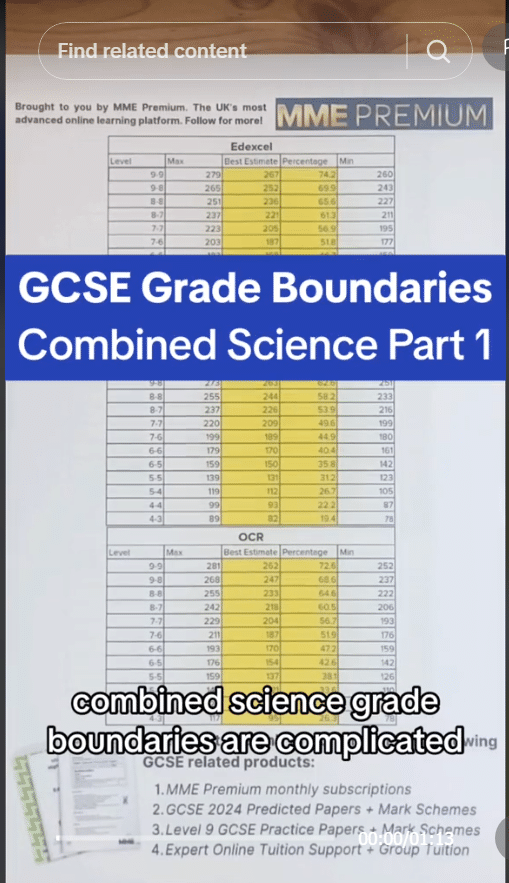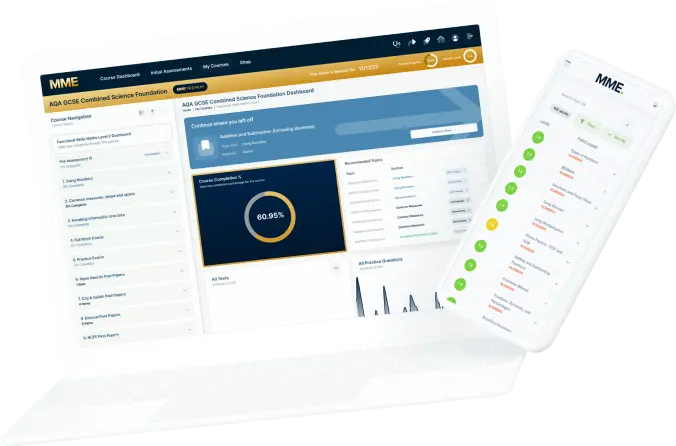Trophic Levels
Trophic Levels Revision
Trophic Levels
Producers make their own food, during photosynthesis, which gets converted into biomass and passed on to different organisms when they are eaten. Biomass is passed along the food chain, through the different trophic levels and eventually gets broken down by decomposers. Pyramids of biomass show how the total biomass of each trophic level differs and how it always decreases as you go up the trophic levels. The efficiency of each energy transfer can be calculated using a simple formula.
Food Chains
Food chains show what different organisms feed on and how energy is passed on.
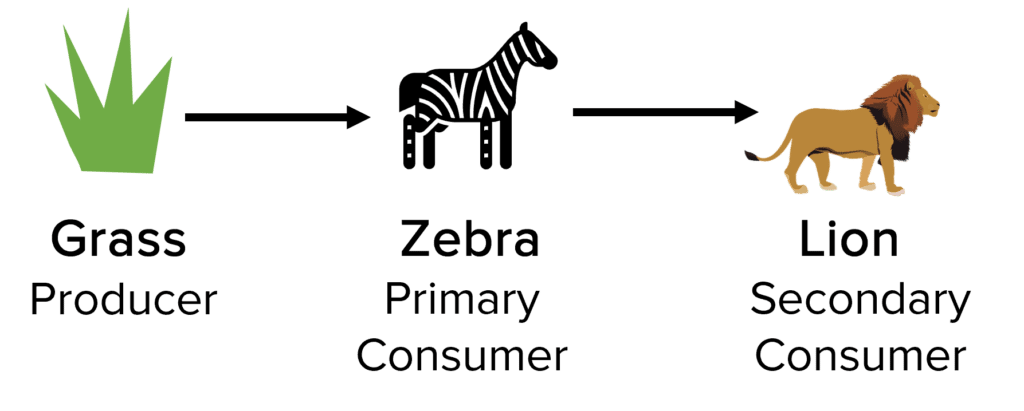
All food chains start with a producer, an organism that can produce its own food (glucose) using light energy in photosynthesis. Producers are usually green plants or algae. The glucose produced will then be used to make other biological molecules that make up the plants biomass (mass of living material). This is where energy is stored in the plant. When the producers biomass is eaten by another organism (primary consumer), energy is transferred. Energy continues to be transferred along the food chain as organisms feed on each other (secondary consumer, tertiary consumer etc.).
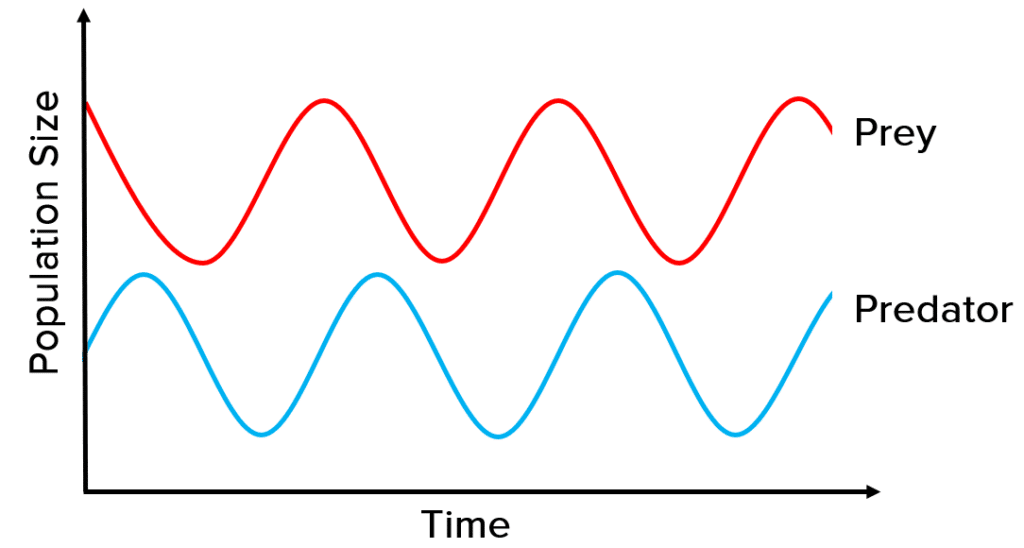
Consumers that get eaten by other animals are called prey and those that eat other animals are called predators.
In any stable community, as the number of prey increases, the number of predators increases. However, the increase in predators then causes the number of prey to decrease. This continues in a cycle. The numbers of predators and prey will always be slightly out of sync because it takes some time for one population to respond to the change in the other.
Trophic Levels in an Ecosystem
Trophic levels are used to describe where an organism is in a food chain.
Trophic level 1 – producers: These are green plants and algae that make their own food (glucose) using energy from the sun.
Trophic level 2 – primary consumers: This includes herbivores that feed only on the producers.
Trophic level 3 – secondary consumers: These are carnivores (meat eaters) that eat primary consumers.
Trophic level 4 – tertiary consumers: These are the carnivores that eat other carnivores (secondary consumers).
There can be more trophic levels in a food chain but it usually stops at 4 or 5 because too much energy is lost between each level. Apex predators are those at the top of the food chain with no predators; they will always have the highest trophic level.

Decomposers (bacteria and fungi) break down dead plant and animal material into smaller food molecules using digestive enzymes. Some of the products are absorbed by the decomposers and some nutrients are put back into the environment for producers to use for growth.
Pyramids of Biomass
As you go up a food chain, energy is lost meaning the number of organisms and biomass also decreases. Biomass is the physical mass of living things. Dry mass (mass excluding their water content) is most commonly used.
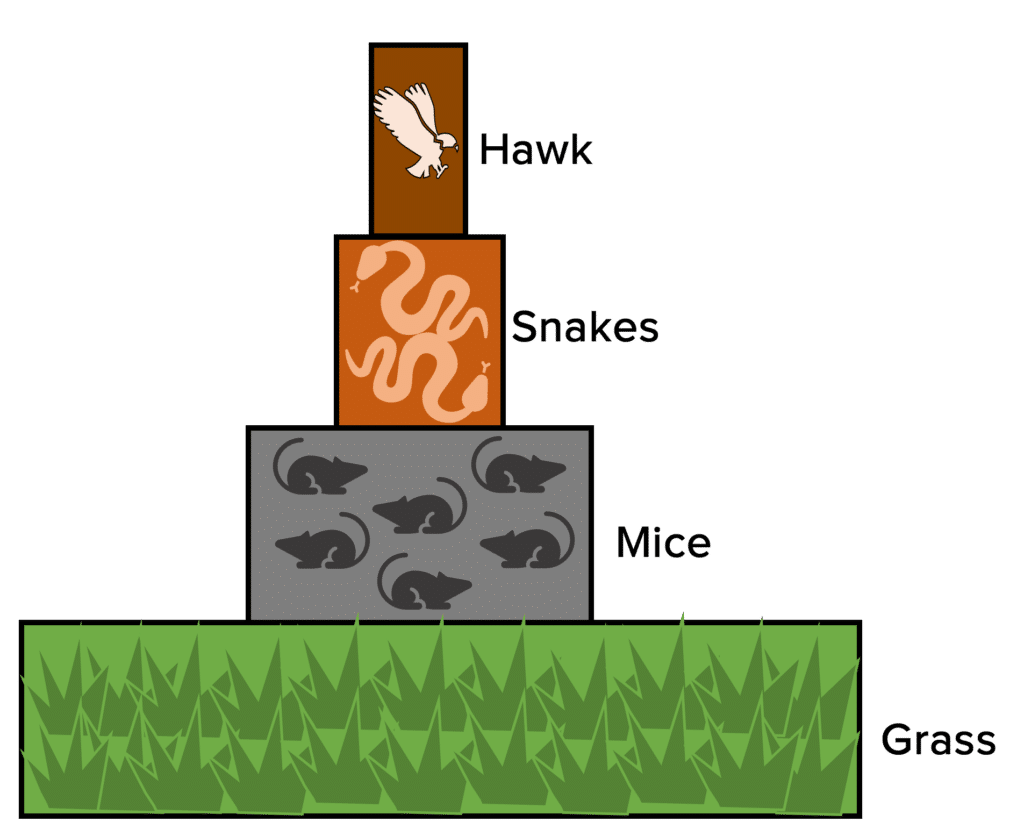
Pyramids of biomass represent how much total biomass there is in a trophic level, relative to the other levels in the ecosystem. The wider the bar, the greater the total relative biomass. Trophic level 1 (producers) is placed at the bottom of the pyramid and each trophic level is given its own bar going upwards. The width of the bar will always get smaller as you go up the pyramid as energy and biomass is lost. When drawn to scale, pyramids of biomass can tell you a lot about an ecosystem.
The food chain from the previous section is depicted in the pyramid of biomass to the right. The total mass of grass is greater than the total mass of mice that feed on it. The total mass of mice is greater than the total mass of snakes and the total mass of the snakes is larger than the total mass of the hawk.
Biomass Loss
Light energy from the sun is used by producers to make glucose in photosynthesis. However, they only use 1\% of the energy they receive, the rest is wasted.
The glucose produced in photosynthesis is used to make other molecules that make up the organisms biomass. Biomass stores energy for when it is needed and is passed on to other organisms when the producer is eaten. However, only 10\% of biomass is transferred between each trophic level. Biomass is lost in a variety of different ways:
- Consumers will sometimes leave parts of the organism that they are eating, e.g. bones.
- Consumers may not be able to absorb all the biomass they ingest so it will be lost in their faeces.
- Organisms loose some material as waste products, e.g. carbon dioxide and water lost during respiration and urea and water are lost in urine when proteins are broken down.
Efficiency
The efficiency of a biomass transfer is how much biomass is transferred to a consumer compared to how much is available.
You can calculate the efficiency of a transfer using this formula:
\text{efficiency (}\%\text{)} = \dfrac{\text{biomass in higher trophic level}}{\text{biomass in previous trophic level}} \times 100
Example: Using the information from the food chain below, calculate the efficiency of biomass transfer from the second to the third trophic level.

Trophic Levels Example Questions
Question 1: A fox population (predator) and stoat population (prey) are part of a stable community. The line on the graph shows how the number of foxes have changed over time. Draw another line on the graph predicting how the size of the stoat population has changed in response.
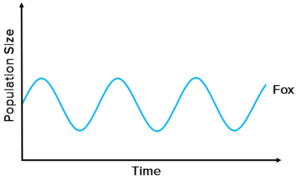
[2 marks]
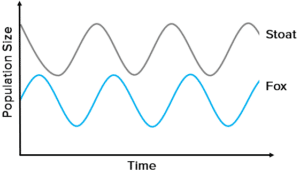
1 mark for a curvy line.
1 mark for being out of sync with the fox line.
Question 2: What is an apex predator?
[1 marks]
A consumer that has no predator.
Question 3: Suggest 2 reasons why only 10\% of biomass is transferred between trophic levels.
[2 marks]
Any 2 from:
- Not all parts of an organism are eaten by a consumer.
- Not all parts of an organism are digested and absorbed by a consumer and pass as faeces.
- Lost in urine / urea and water
- Lost as carbon dioxide and water during respiration.


